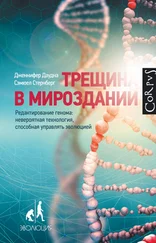S. P. Golovan et al., “Pigs Expressing Salivary Phytase Produce Low-Phosphorus Manure”, Nature Biotechnology 19 (2001): 741–745.
C. Perkel, “University of Guelph ‘Enviropigs’ Put Down, Critics Blast ‘Callous’ Killing”, Huffington Post Canada , June 21, 2012.
R. Kambadur et al., “Mutations in Myostatin (GDF8) in Double-Muscled Belgian Blue and Piedmontese Cattle”, Genome Research 7 (1997): 910–916.
A. C. McPherron, A. M. Lawler, and S. J. Lee, “Regulation of Skeletal Muscle Mass in Mice by a New TGF-β Superfamily Member”, Nature 387 (1997): 83–90.
A. Clop et al., “A Mutation Creating a Potential Illegitimate microRNA Target Site in the Myostatin Gene Affects Muscularity in Sheep”, Nature Genetics 38 (2006): 813–818.
D. S. Mosher et al., “A Mutation in the Myostatin Gene Increases Muscle Mass and Enhances Racing Performance in Heterozygote Dogs”, PLoS Genetics 3 (2007): e79.
M. Schuelke et al., “Myostatin Mutation Associated with Gross Muscle Hypertrophy in a Child”, New England Journal of Medicine 350 (2004): 2682–2688.
E. P. Zehr, “The Man of Steel, Myostatin, and Super Strength”, Scientific American , June 14, 2013.
L. Qian et al., “Targeted Mutations in Myostatin by Zinc-Finger Nucleases Result in Double-Muscled Phenotype in Meishan Pigs”, Scientific Reports 5 (2015): 14435.
X. Wang et al., “Generation of Gene-Modified Goats Targeting MSTN and FGF5 via Zygote Injection of CRISPR/Cas9 System”, Scientific Reports 5 (2015): 13878.
S. Reardon, “Welcome to the CRISPR Zoo”, Nature News , March 9, 2016.
A. Harmon, “Open Season Is Seen in Gene Editing of Animals”, New York Times , November 26, 2015.
C. Whitelaw et al., “Genetically Engineering Milk”, Journal of Dairy Research 83 (2016): 3–11.
D. J. Holtkamp et al., “Assessment of the Economic Impact of Porcine Reproductive and Respiratory Syndrome Virus on United States Pork Producers”, Journal of Swine Health and Production 21 (2013): 72–84.
K. M. Whitworth et al., “Use of the CRISPR/Cas9 System to Produce Genetically Engineered Pigs from In Vitro-Derived Oocytes and Embryos”, Biology of Reproduction 91 (2014): 1–13.
K. M. Whitworth et al., “Gene-Edited Pigs Are Protected from Porcine Reproductive and Respiratory Syndrome Virus”, Nature Biotechnology 34 (2016): 20–22.
Center for Food Security and Public Health, “African Swine Fever”, www.cfsph.iastate.edu / Factsheets / pdfs / african_swine_fever.pdf.
C. J. Palgrave et al., “Species-Specific Variation in RELA Underlies Differences in NF-κB Activity: A Potential Role in African Swine Fever Pathogenesis”, Journal of Virology 85 (2011): 6008–6014.
S. G. Lillico et al., “Mammalian Interspecies Substitution of Immune Modulatory Alleles by Genome Editing”, Scientific Reports 6 (2016): 21645.
H. Devlin, “Could These Piglets Become Britain’s First Commercially Viable GM Animals?”, Guardian , June 23, 2015.
B. Graf and M. Senn, “Behavioural and Physiological Responses of Calves to Dehorning by Heat Cauterization with or Without Local Anaesthesia”, Applied Animal Behaviour Science 62 (1999): 153–171.
I. Medugorac et al., “Bovine Polledness – an Autosomal Dominant Trait with Allelic Heterogeneity”, PLoS ONE 7 (2012): e39477.
D. F. Carlson et al., “Production of Hornless Dairy Cattle from Genome-Edited Cell Lines”, Nature Biotechnology 34 (2016): 479–481.
K. Grens, “GM Calves Move to University”, Scientist , December 21, 2015.
N. Rosenthal and Steve Brown, “The Mouse Ascending: Perspectives for Human-Disease Models”, Nature Cell Biology 9 (2007): 993–999; www.findmice.org / repository .
B. Shen et al., “Generation of Gene-Modified Cynomolgus Monkey via Cas9/RNA-Mediated Gene Targeting in One-Cell Embryos”, Cell 156 (2014): 836–843.
H. Wan et al., “One-Step Generation of p53 Gene Biallelic Mutant Cynomolgus Monkey via the CRISPR/Cas System”, Cell Research 25 (2015): 258–261.
Y. Chen et al., “Functional Disruption of the Dystrophin Gene in Rhesus Monkey Using CRISPR/Cas9”, Human Molecular Genetics 24 (2015): 3764–3774.
Z. Tu et al., “CRISPR/Cas9: A Powerful Genetic Engineering Tool for Establishing Large Animal Models of Neurodegenerative Diseases”, Molecular Neurodegeneration 10 (2015): 35–42; Z. Liu et al., “Generation of a Monkey with MECP2 Mutations by TALEN-Based Gene Targeting”, Neuroscience Bulletin 30 (2014): 381–386.
C. Sheridan, “FDA Approves ‘Farmaceutical’ Drug from Transgenic Chickens”, Nature Biotechnology 34 (2016): 117–119.
L. R. Bertolini et al., “The Transgenic Animal Platform for Biopharmaceutical Production”, Transgenic Research 25 (2016): 329–343.
J. Peng et al., “Production of Human Albumin in Pigs Through CRISPR/Cas9-Mediated Knockin of Human cDNA into Swine Albumin Locus in the Zygotes”, Scientific Reports 5 (2015): 16705.
D. Cooper et al., “The Role of Genetically Engineered Pigs in Xenotransplantation Research”, Journal of Pathology 238 (2016): 288–299.
U. S. Department of Health and Human Services, “The Need Is Real: Data”, www.organdonor.gov/about/data.html.
L. Yang et al., “Genome-Wide Inactivation of Porcine Endogenous Retroviruses (PERVs)”, Science 350 (2015): 1101–1104.
A. Regalado, “Surgeons Smash Records with Pig-to-Primate Organ Transplants”, MIT Technology Review , August 12, 2015.
D. Cyranoski, “Gene-Edited ‘Micropigs’ to Be Sold as Pets at Chinese Institute”, Nature News , September 29, 2015.
X. Wang et al., “One-Step Generation of Triple Gene-Targeted Pigs Using CRISPR/Cas9 System”, Scientific Reports 6 (2016): 20620.
Cyranoski, “ Gene-Edited ‘Micropigs.’ ”
C. Maldarelli, “Although Purebred Dogs Can Be Best in Show, Are They Worst in Health?”, Scientific American , February 21, 2014.
Q. Zou et al., “Generation of Gene-Target Dogs Using CRISPR/Cas9 System”, Journal of Molecular Cell Biology 7 (2015): 580–583.
Читать дальше
![Сэмюел Стернберг Трещина в мироздании [litres] обложка книги](/books/407192/semyuel-sternberg-trechina-v-mirozdanii-litres-cover.webp)





![Григорий Кузнецов - Руны. Ключи к энергии мироздания [litres]](/books/385550/grigorij-kuznecov-runy-klyuchi-k-energii-mirozdaniya-thumb.webp)
![Сэмюел Сайкс - Семь клинков во мраке [litres]](/books/386145/semyuel-sajks-sem-klinkov-vo-mrake-litres-thumb.webp)
![Кае де Клиари - Трещина [СИ]](/books/398531/kae-de-kliari-trechina-si-thumb.webp)
![Сэмюел Сайкс - Десять железных стрел [litres]](/books/431168/semyuel-sajks-desyat-zheleznyh-strel-litres-thumb.webp)

